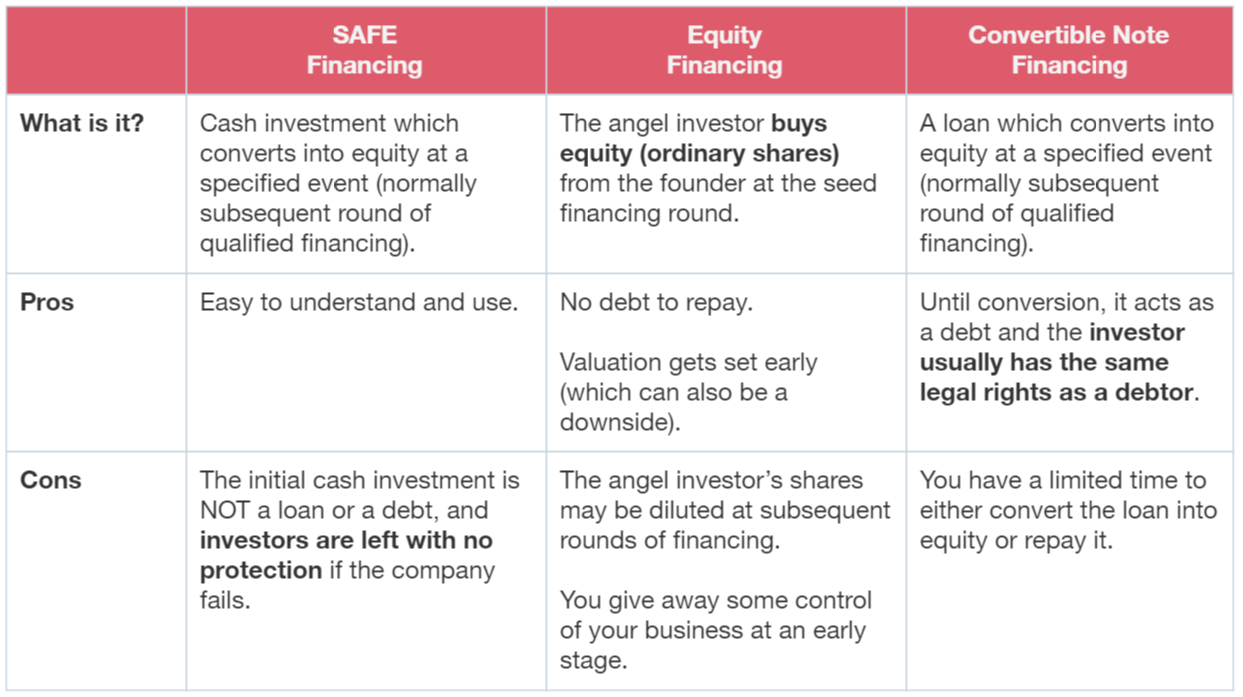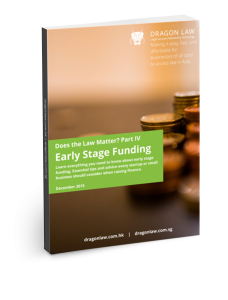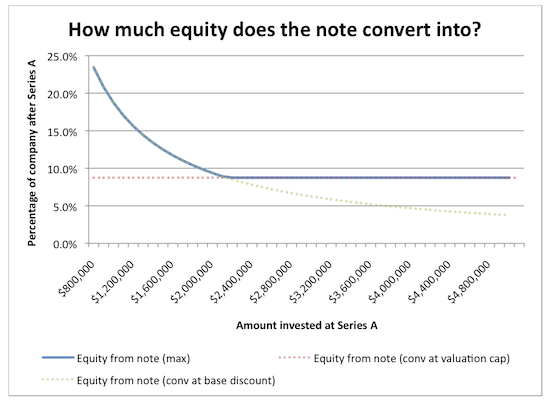Need any help? Contact us:

Table of Contents
Most businesses will require some sort of seed investment before they can enter into the next stage of growth. However, you want to be careful not to give up too much control over your business when raising funds.

Before you enter into negotiation processes, you want to be fully-aware of your own leverage. If you have a clear idea of what’s at play in a fundraising discussion, you will be able to negotiate a better deal for your startup.
Fundraising via convertible note has become increasingly popular among startups today. But do you know how convertible notes work?
Let’s get started with the basics:
What is a Convertible Note?
A convertible note is a form of short-term debt paid back in equity. The investor puts cash in your startup and receives discounted shares when you issue shares at a later point. In other words, they don’t “own” part of your company just yet – this essentially means you get to retain control. At the same time, the investor is still considered a debtor. As such, they can set a maturity date for the loan and reclaim money later if you decide not to issue shares. Raising funds via a convertible note is therefore a popular alternative to SAFE financing and equity financing. Let’s compare the three:

To issue a Convertible Note, you will need these 3 documents:
- Convertible Note Term Sheet: This document summarises the key terms of the agreement between a startup and investors. It is generally signed at the beginning of the transaction once preliminary terms of the financing have been agreed, before commencing detailed due diligence and drafting of definitive agreements.
- Convertible Note Subscription Agreement: This document is a contract for an investor to subscribe for a convertible note. A convertible note created under a Convertible Note Subscription Agreement is interest-bearing, has a maturity date, and specifies a minimum amount of funds to be raised at the equity financing.
- Convertible Note Certificate: A deed confirming the purchase by the registered holder of a convertible note instrument. It is a written promise to repay the debt at a specified time through equity (shares).
Read more: Download our free eBook on Early Stage Funding
Here’s a (simplified) example of what a Convertible Note Agreement might look like:
After negotiation, your investor agrees to provide you with $200,000 in seed funding. In return, you give him a convertible note that converts during Series A funding at a 20% discount rate. In other words, when you raise your Series A funding, he will get $200,000 worth of stock at a 20% discount.
Now, let’s imagine your startup gets a $5 million post-money valuation during series A funding. To get 30% of your company, VCs put in $1.5 million.
If your seed investor were to invest in Series A, $200,000 would get him only 4% of your stock. However, because he invested early, he gets a 20% discount on the stock, and thus ends up with 5% of the stock instead – $50,000 extra worth of equity.
What are the most important variables of a Convertible Note Agreement?
The three most important variables in a Convertible Note Agreement are the investment threshold, the valuation cap, and the discount rate.
The investment threshold denotes when the convertible note executes – that is, when the investor gets his equity. Usually, the threshold is set as a specific amount; for example, when the startup raises $1 million or more. It could also be executed at a specific time; for example, when the startup raises money through Series A funding. In most cases there is no practical difference between the two, as the note executes in Series A irrespectively.
The discount rate outlines how much reward the investor gets for taking the risk to come on board early. In the above example, the 20% discount rate meant that the investor walked away with 5% of your equity instead of 4%.
The valuation cap protects the investor from getting their investment too diluted when your startup takes off. In the example outlined above, the investor ended up getting a 5% equity share. But should you have been valued at $50 million, they would have received only 0.5% share in your company – even if they backed it first! A valuation cap ensures the investor that they’ll get a large enough equity share.
So how does a valuation cap work?
Your company gets a pre-money valuation during Series A funding. If the pre-money valuation exceeds the valuation cap, your investors gets the opportunity to execute the convertible note and are entitled to negotiate for a pre-fixed stake in the Convertible Note Agreement.
The following graph, created with formulas from Martin Kleppman’s blog, illustrates:

As you can see here, low VC investment means that your seed investor will benefit from the discount. By investing $1.5 million, as in the above example, he gets a 5% stake. But as your valuation grows and VCs put in more money, your seed investor’s stake dilutes. A valuation cap puts a floor to the degree of dilution.
You may also notice how a low valuation cap favours the investor. Founders and VCs investing in series A, on the other hand, benefit from a high valuation cap. The lower the valuation cap, the more likely you will hit the “floor”, and your seed investor gets a relatively large share of your company at a very low price.
Other common terms in a Convertible Note Agreement
Two other terms often included are the interest rate and the maturity date. As the convertible note is technically a loan, investors could charge you interest, and thus receive slightly more shares when the note converts. A maturity date is included so that the seed investor knows he will get money back should your startup delay or decide against Series A funding.
A good understanding of the Convertible Note Agreement is a great way to strengthen your hand in a negotiation with a seed investor.
Another way to strengthen your negotiating position is to make sure you have all your legal documents and processes in order. For starters, ensure you have a Confidentiality Agreement in place before you enter into any fundraising negotiations. Start drafting your Confidentiality Agreement with a Zegal free trial.
Sign up for a free trial. No minimum commitment, no credit card details.




